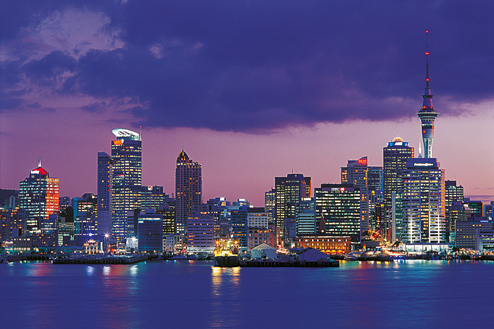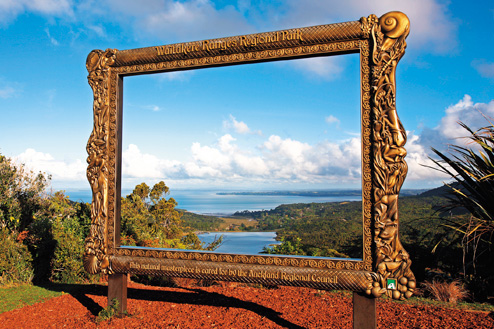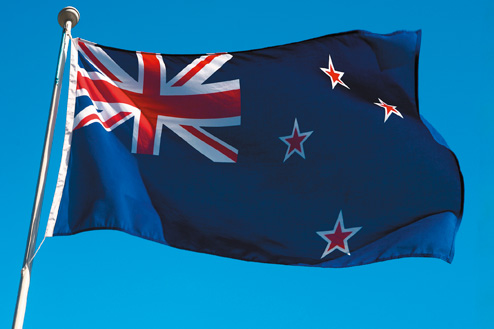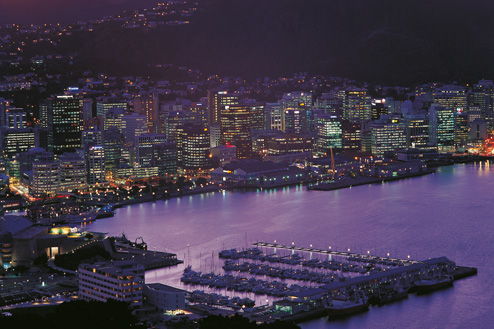European Discovery and Settlement
Englishman James Cook was the first European to set foot on Aotearoa, in 1769. Over a century earlier, Dutch seaman Abel Tasman had ‘discovered’ the land mass when he anchored in Golden Bay. However, when his small rowing boats came under attack from a Maori war canoe, resulting in the death of four of his sailors, Tasman fled, but not before naming the country Staten Land (later rechristened Nieuw Zeeland after the Dutch province).
Cook’s initial landing didn’t fare much better. He first set foot in Gisborne, where conflict with the local Maori tribe resulted in several deaths, before also clashing with the native Ngati Kahungunu people after anchoring near Cape Kidnappers. But the English sailor wasn’t going to give up so easily. Cook unfurled the British flag off the coast of the Coromandel Peninsula, claiming formal possession of the land against orders and without the permission of the Maori. New Zealand, as it has come to be known, was in its infancy.
The British were in no great rush to colonise a very foreign land miles from home. It took around another half a century for initial, early European settlement to occur – largely as the result of an ‘overspill’ from the Botany Bay penal colony in nearby Australia. By 1830 settlers’ outposts were firmly established in what was widely recognised as a lawless land, focused around Kororareka (now Russell) in the Bay of Islands. ‘Of all the vile holes I ever visited, this is the vilest,’ said Matthew Felton, the first Surveyor General of New Zealand, of the region in 1840. This seemed to capture the mood of the place at the time, despite the presence of Christian missionary Samuel Marsden and his followers, who arrived in 1814.
Meanwhile, for the Maori, tribal structure began to crumble as European disease swept through their population and alcohol abuse became rife. Tribes relocated from their prime lands to insalubrious encampments near flax swamps in exchange for the guns that were fuelling inter-tribal wars. In desperation, a group of Maori tribal chiefs petitioned the British monarch to become ‘friend and guardian of these islands’ (despite Cook’s actions in 1769, New Zealand was never declared as ‘officially’ British). James Busby was sent as British Resident in 1833 and, after a series of failures to regain peace and control, persuaded 35 northern chiefs to proclaim themselves the United Chiefs of New Zealand, in 1835. Later, as interest in New Zealand land as a valuable commodity began to grow, he encouraged the drawing up of the Treaty of Waitangi in 1840.
Over the next two decades, fallout from disagreements over the treaty escalated, eventually encouraging Maori to put aside inter-tribal animosities for the greater fight – getting the Pakeha (as the European settlers were – and still – are called) to respect their ownership of the land. This eventually led to the New Zealand Wars of the 1860s, with brutal fighting throughout the North Island. And while fighting had largely finished by the end of that decade, peace wasn’t officially declared until 1881.
Meanwhile, the number of Pakeha in NZ continued to grow. Between 1839 and 1843, the New Zealand Company, founded by Edward Gibbon Wakefield, had dispatched 19,000 people to planned settlements in Wellington, Wanganui, Nelson and New Plymouth. This number swelled from 60,000 to 470,000 between 1860 and 1881, with settlement increasing in the South Island (mostly as a result of the Gold Rush that began around Queenstown in the 1860s). And New Zealand’s indigenous people were more and more marginalised.
Cook’s initial landing didn’t fare much better. He first set foot in Gisborne, where conflict with the local Maori tribe resulted in several deaths, before also clashing with the native Ngati Kahungunu people after anchoring near Cape Kidnappers. But the English sailor wasn’t going to give up so easily. Cook unfurled the British flag off the coast of the Coromandel Peninsula, claiming formal possession of the land against orders and without the permission of the Maori. New Zealand, as it has come to be known, was in its infancy.
The British were in no great rush to colonise a very foreign land miles from home. It took around another half a century for initial, early European settlement to occur – largely as the result of an ‘overspill’ from the Botany Bay penal colony in nearby Australia. By 1830 settlers’ outposts were firmly established in what was widely recognised as a lawless land, focused around Kororareka (now Russell) in the Bay of Islands. ‘Of all the vile holes I ever visited, this is the vilest,’ said Matthew Felton, the first Surveyor General of New Zealand, of the region in 1840. This seemed to capture the mood of the place at the time, despite the presence of Christian missionary Samuel Marsden and his followers, who arrived in 1814.
Meanwhile, for the Maori, tribal structure began to crumble as European disease swept through their population and alcohol abuse became rife. Tribes relocated from their prime lands to insalubrious encampments near flax swamps in exchange for the guns that were fuelling inter-tribal wars. In desperation, a group of Maori tribal chiefs petitioned the British monarch to become ‘friend and guardian of these islands’ (despite Cook’s actions in 1769, New Zealand was never declared as ‘officially’ British). James Busby was sent as British Resident in 1833 and, after a series of failures to regain peace and control, persuaded 35 northern chiefs to proclaim themselves the United Chiefs of New Zealand, in 1835. Later, as interest in New Zealand land as a valuable commodity began to grow, he encouraged the drawing up of the Treaty of Waitangi in 1840.
Over the next two decades, fallout from disagreements over the treaty escalated, eventually encouraging Maori to put aside inter-tribal animosities for the greater fight – getting the Pakeha (as the European settlers were – and still – are called) to respect their ownership of the land. This eventually led to the New Zealand Wars of the 1860s, with brutal fighting throughout the North Island. And while fighting had largely finished by the end of that decade, peace wasn’t officially declared until 1881.
Meanwhile, the number of Pakeha in NZ continued to grow. Between 1839 and 1843, the New Zealand Company, founded by Edward Gibbon Wakefield, had dispatched 19,000 people to planned settlements in Wellington, Wanganui, Nelson and New Plymouth. This number swelled from 60,000 to 470,000 between 1860 and 1881, with settlement increasing in the South Island (mostly as a result of the Gold Rush that began around Queenstown in the 1860s). And New Zealand’s indigenous people were more and more marginalised.













